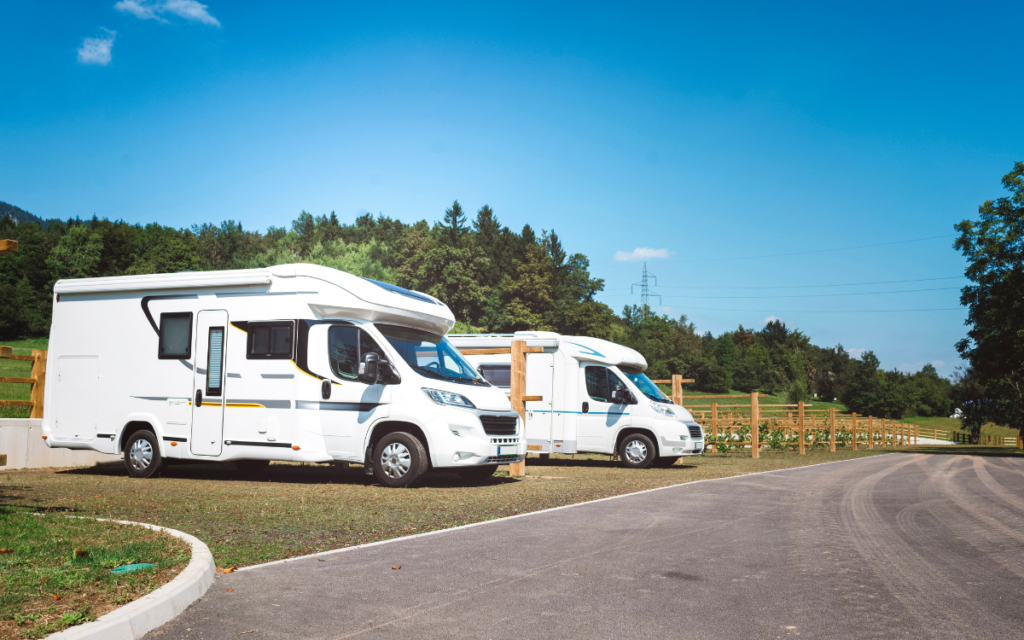
RV Park Cap Rates (All You Need to Know)
For those involved in RV park entrepreneurship, a thorough comprehension of the industry’s financial aspects is key to ensuring sustained growth and profitability. Among these, the concept of “cap rate” or capitalization rate frequently emerges as an essential metric. But what exactly are RV park cap rates, and why do they hold such significant importance for investors and entrepreneurs?
The capitalization rate serves as a crucial indicator of the potential return on a given investment. For those managing, owning, or contemplating investment in RV parks, cap rates provide a critical perspective on assessing both the current and projected profitability of an enterprise.
Here, we will explore how and why the knowledge of RV park cap rates can be harnessed to elevate your business. This article aims to equip both seasoned park owners and entrepreneurs just starting in the industry with the insights needed to navigate the financial landscape of RV park business with confidence. For more specialized assistance in financial planning experts like Parikh Financial will be a solution.
What are RV Park Cap Rates?
Capitalization rates, commonly known as cap rates, serve as a cornerstone metric in the realm of real estate and property investment. Specifically, within the RV park industry, understanding cap rates becomes crucial, as these rates offer a lens through which one can assess the attractiveness and potential profitability of a given investment.
RV park cap rates are calculated by dividing the net income of an RV park by its purchase price. For example, if an RV park generates $100,000 in net income per year and is sold for $1,000,000, its cap rate is 10%. The higher the cap rate, the higher the return on investment.
Mathematically, it is represented as:
Cap Rate = Net Operating Income / Current Market Value
For RV parks, the net income is calculated by accounting for all the real expenses that the business incurs. These include property tax, utilities, maintenance, insurance, payroll, and marketing. You also need to deduct any non-recurring or non-operating expenses that are not related to the normal operation of an RV park, such as capital improvements or loan fees.
To estimate the market value of an RV park realistically, you need to consider the market conditions and the demand and supply of similar properties in the area. You also need to factor in any potential upside or downside that an RV park has in terms of location, occupancy, amenities, customer loyalty, and overall condition.
A higher cap rate typically signifies a potentially higher return on investment but may also indicate higher risks. Conversely, a lower cap rate might suggest a more stable or premium property but often comes with a higher purchase price.
It is essential to note that while cap rates provide a snapshot of potential returns, they do not account for future property value appreciation, financing costs, or potential changes in income. Therefore, RV park cap rates should be interpreted alongside other financial metrics and qualitative factors to form a comprehensive view of an investment’s merits.
Factors Influencing RV Park Cap Rates

Like all metrics, cap rates don’t exist in a vacuum. Several intertwined factors can sway these rates, affecting their accuracy and reliability. A nuanced grasp of these variables ensures accurate assessments, strategic planning, and sound investment decisions.
Want to Grow Your Campground Business?
Book a FREE, personalized demo to learn about how RoverPass will save you time and help you earn more revenue
- Location: One of the primary determinants, the geographic region of an RV park, plays a crucial role. Proximity to popular attractions, main highways, or serene environments can drastically affect the park’s valuation and, consequently, its cap rate.
- Amenities and Facilities: Modern travelers often seek comforts akin to home. RV parks equipped with facilities like Wi-Fi, laundry, swimming pools, and recreational areas often command higher valuations. Thus, the quality and range of amenities can significantly impact cap rates.
- Market Trends: Macro and local economic conditions, including tourism trends, can influence RV park demand and revenue potential. A booming local economy or surge in tourism can lead to higher cap rates by increasing potential income.
- Condition and Age of the Park: The maintenance and overall state of an RV park directly reflect its valuation. Well-maintained parks with modern infrastructure can command better rates, affecting the cap rate in turn.
- Financing Terms: Favorable financing terms, such as lower interest rates or extended payment periods, can increase an investor’s potential return, thereby affecting the cap rate. Conversely, stringent terms might reduce the perceived attractiveness of an investment, potentially lowering the cap rate.
In this intricate web of factors, RV park entrepreneurs and investors must navigate skillfully to make the most of their ventures.
How to Calculate the Cap Rate for Your RV Park
In the world of RV park investments, the capitalization rate, commonly termed the cap rate, emerges as an invaluable tool for gauging the potential return on an investment. However, its utility is only as good as its calculation. Let’s delve into how one can accurately compute the cap rate for an RV park.
Step 1: Determine the Net Operating Income (NOI)
The NOI is the annual revenue of the RV park minus all operating expenses. It’s imperative to account for all sources of income, such as rent, additional service fees, and any other revenue streams. From this total, subtract all operating costs, which may include staffing, maintenance, utilities, marketing, and any other related expenses. The resulting figure is your NOI.
Step 2: Ascertain the Current Market Value
The market value can be determined through a variety of methods, including professional appraisals, analyzing comparable sales, or income-based approaches. An accurate evaluation ensures that the cap rate is grounded in real-world data.
Step 3: Apply the Cap Rate Formula
With the NOI and current market value in hand, it’s time to apply the formula:
Cap Rate = Net Operating Income / Current Market Value
Understanding and accurately calculating the cap rate is indispensable for RV park owners. It not only assists in valuating the property but also plays a pivotal role in shaping investment strategies and future financial decisions.
RV Park Cap Rates and Investment Plans
In the intricate tapestry of the RV park industry, the cap rate weaves itself as a foundational thread, pivotal for astute business planning. Understanding the cap rate is a barometer of an investment’s potential return and risk profile. A well-calibrated cap rate provides clarity on an asset’s health, assisting in strategy formulation and long-term planning.
However, even the most meticulously crafted plans can falter without the necessary resources for implementation. Gaining access to capital is one of the most important challenges RV park entrepreneurs face today. A comprehensive understanding of cap rates can reveal the optimal moments for expansion or renovation, but without ready capital, these insights remain unrealized.
If you are planning for new investments in your RV park, check out Roverpass Capital Lending service, a finance solution that lets you access the funds you need to build or expand your RV park.
Keep reading our blog for more insights on the exciting terrain of the RV park business!